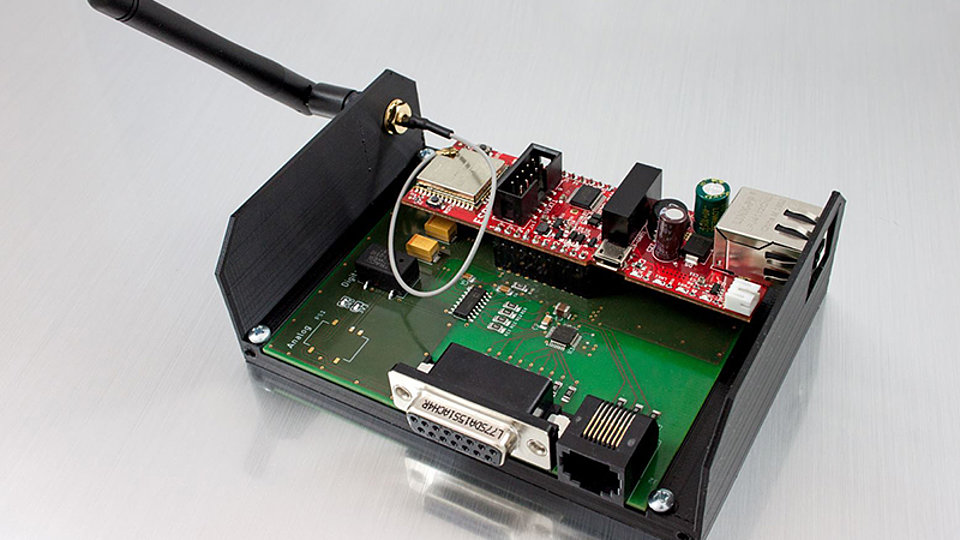Digitization in cleanrooms – iSensU connects legacy tools to modern processing equipment
Digitization, industry 4.0, and Internet of Things (IoT) will have a significant impact on our modern society, affecting everyday life as well as modern industrial production. Machines communicating with each other, interconnected processes, and data that are evaluated instantly will be standard. FBH is preparing for the future by digitizing its cleanroom infrastructure. Modern equipment with digital interfaces is used to optimize and evaluate the process steps in FBH's semiconductor research. In addition, established tools are used for a large number of process steps. Thus, machines with different automatization levels are operated in one lab. While today’s state-of-the-art machinery and equipment usually offer electronic interfaces for data transfer, customized solutions are required to connect legacy tools to digital-based data acquisition.
For this purpose, FBH has been developing an electronic IoT device called iSensU (intelligent Sensor Unit, see figure). It provides ad-hoc connectivity to legacy devices, black-box sensors, and industrial light towers. By using Message Queuing Telemetry Transport (MQTT) as a modern IoT protocol, high-resolution input readings from the sensors are continuously streamed to data brokers and databases.
The iSensU is based on an ESP32 microcontroller, which combines a 240 Mhz Dual-Core CPU with Wifi, Bluetooth and, together with some other added components, LAN capabilities. The LAN port also supports power over Ethernet, which delivers enough current to power the iSensU. The board connects various analog sensors to the microcontroller via a 12 channel 24 bit high-resolution ADC (analog/digital-converter). In this way, eight 0-10 V voltage inputs and 4 photoresistors for light-tower read-out based status recognition can be simultaneously connected. The iSensU can easily be configured by a web interface, which offers a platform independent way to connect the device with the available network and set up all channels properly.
The prototype of iSensU is currently being tested at FBH and will shortly be made available to the altogether 13 research partners that joined forces within Research Fab Microelectronics Germany (FMD) – among them FBH. The FMD bundles the know-how and technological infrastructure as largest cross-site R&D cooperation for micro- and nanoelectronics in Europe. The institutes within the FMD network operate more than 12,500 square meters of cleanroom facilities with over 2,000 tools, worth in excess of €1b. In order to efficiently use these cross-institutional resources, digital integration of the resources, their processes, and the associated technologies is required. FBH thus plays a key role in the digitalization of FMD fabrication processes, paving the way towards a lab with full sensory control. iSensU also provides an interface to the Manufacturing Execution System (MES) that is being rolled out within the FMD to process and analyze data for optimal processing results.
The FMD is a cooperation of Fraunhofer Group for Microelectronics with the Leibniz institutes IHP and FBH and funded with ~350 million euros by the Federal Ministry of Education and Research (BMBF).
